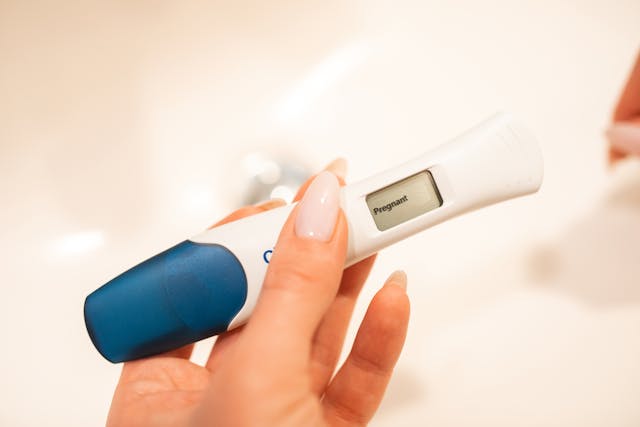Although negotiating the road of conception can feel like solving a difficult problem, the secret to revealing the secrets of fertility is knowledge of your ovulation cycle. This guide will coach you through doable techniques to find your most fertile days.

Decode Your Menstrual Cycle Basics
Your menstrual cycle is a sophisticated biological process that prepares your body for potential pregnancy. Far more than a monthly occurrence, it represents a complex interplay of hormonal changes and physiological preparations.
A typical menstrual cycle spans approximately 28 days, but “normal” encompasses a range from 21 to 35 days. Each cycle begins on the first day of your period and concludes just before the next one starts. During this time, your body undergoes remarkable transformations.
Hormones change considerably across the cycle. Your ovaries’ follicles develop; one dominant follicle is ready to produce an egg. The thickening uterine lining in expectation of prospective fertilization creates the ideal conditions for a possible pregnancy.
Midway through your cycle, ovulation marks the crucial point. Although an ovulation calculator can assist in estimating this window, individual differences mean customized tracking is vital. A developed egg is discharged from the ovary during this period, passes down the fallopian tube, and stays alive for over twenty-four hours.
Key Methods for Tracking Ovulation
Tracking ovulation requires a multi-faceted approach combining several methods:
Calendar Method
- Begin by tracking the first day of your period each month.
- Record cycle lengths for at least six months.
- Calculate the average cycle length.
- Identify potential ovulation days by subtracting 14 days from your expected next period.
The calendar method provides a mathematical approach to predicting your fertile window, though it’s less accurate for women with irregular cycles.
Cervical Mucus Technique
Hormonal changes transform cervical mucus throughout your cycle. As ovulation approaches, mucus becomes more abundant, clearer, and stretchier—resembling raw egg whites. This technique involves daily observations and documenting mucus consistency and volume.
The most fertile mucus appears clear, stretchy, and similar to egg whites. This signals the most opportune time for conception, indicating that your body is preparing for potential fertilization.
Basal Body Temperature Tracking
This method involves measuring your body temperature immediately upon waking using a specialized basal thermometer. You’ll record temperatures daily, looking for subtle changes that indicate ovulation.
A sustained temperature increase of approximately 0.5°F confirms that ovulation has occurred. While this method doesn’t predict future ovulation, it helps you understand your unique cycle patterns.
Advanced Ovulation Detection Tools
Modern technology offers sophisticated ways to predict your fertile window. Ovulation predictor kits measure luteinizing hormone levels in urine, typically indicating ovulation will occur within 24 hours. These at-home tests provide a scientific approach to fertility tracking.
Digital conception calculators have revolutionized fertility tracking. Smartphone apps combine multiple tracking methods, offering increasingly accurate predictions based on your unique cycle data. These tools integrate various tracking approaches, providing comprehensive insights into your reproductive cycle.
Understand Your Fertile Window
Conception opportunities extend beyond a single day. Your fertile window typically spans about six days—the five days before ovulation and the day after. This broader window increases the chances of successful conception.
Experts recommend specific strategies for maximizing fertility:
- Engage in sexual intercourse every other day during the fertile window.
- Maintain consistent intimate contact.
- Avoid lubricants that might impede sperm movement.
- Support overall reproductive health
Timing is crucial, but it’s not the only factor. The quality of intimate contact and overall reproductive health play significant roles in conception.
Special Considerations for Irregular Cycles
- Irregular menstrual cycles can significantly complicate fertility tracking.
- Potential underlying factors include polycystic ovary syndrome (PCOS).
- Thyroid disorders may impact cycle regularity.
- Significant stress can disrupt hormonal balance.
- Dramatic weight changes affect reproductive health.
Women with irregular cycles should give thorough medical review some thought. This can call for endocrine system evaluation, hormone level testing, and individualized fertility counseling. Close working with medical experts can offer customized advice for your particular circumstances.
Holistic Fertility Preparation
Calculating ovulation is just one aspect of the conception journey. Comprehensive preparation involves a holistic approach to reproductive health.
Nutrition plays a critical role. A balanced diet rich in folic acid, adequate protein, and essential micronutrients supports reproductive function. Lifestyle factors are equally important—managing stress, maintaining a healthy weight, and avoiding environmental toxins can significantly impact fertility.
Medical readiness calls for a careful examination of present drugs, genetic counseling, and preconception health tests. Regular visits and honest conversations with medical professionals build a strong basis for your fertility journey.
Empowered Fertility Tracking
Knowing when you ovulate helps you to see conception from a mystery process into a calculated, deliberate approach. Though no technique ensures instant pregnancy, knowledge empowers you to maximize your fertility potential.
Every woman’s body is unique. What works perfectly for one might require adjustment for another. Stay informed, and don’t hesitate to seek professional guidance when needed.
















Add Your Comment